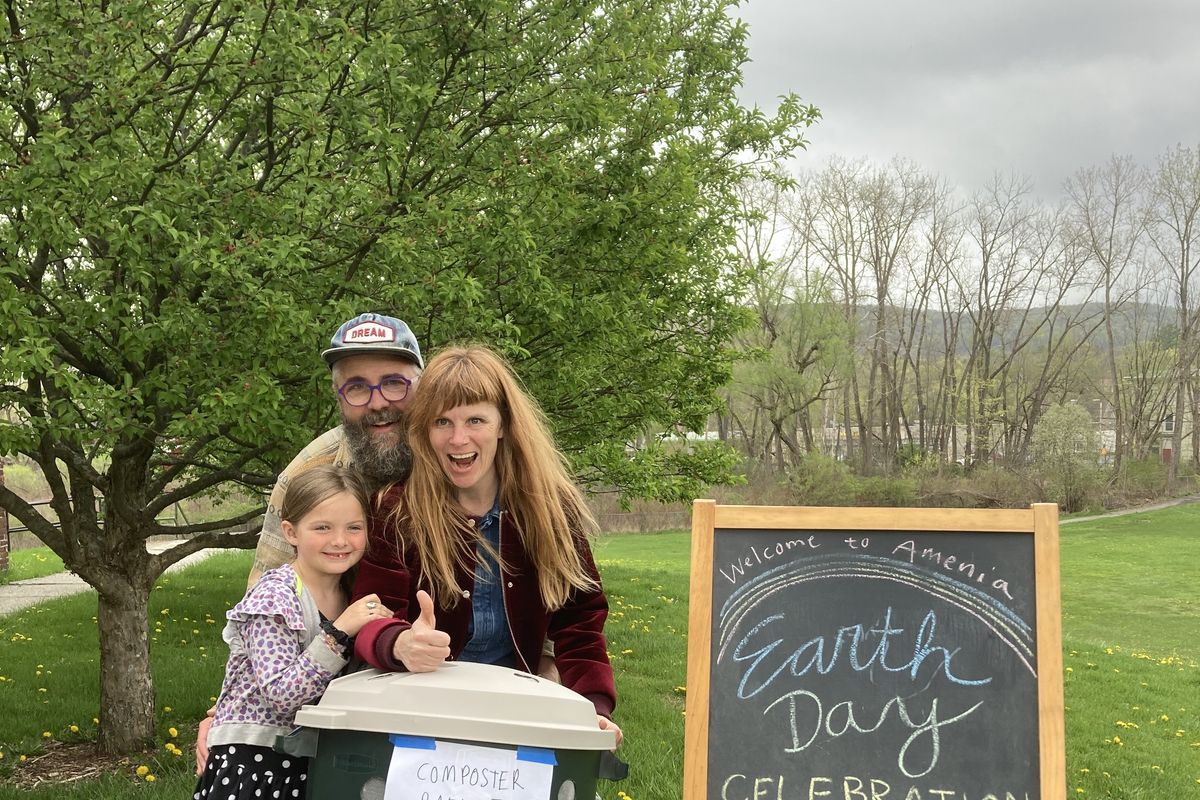Latest News
Warren Prindle
Legendary American artist Jasper Johns, perhaps best known for his encaustic depictions of the U.S. flag, formed the Foundation for Contemporary Arts in 1963, operating the volunteer-run foundation in his New York City artist studio with the help of his co-founder, the late American composer and music theorist John Cage. Although Johns stepped down from his chair position in 2015, today the Foundation for Community Arts continues its pledge to sponsor emerging artists, with one of its exemplary honors being an $80 thousand dollar scholarship given to a graduating senior from Housatonic Valley Regional High School who is continuing his or her visual arts education on a college level. The award, first established in 2004, is distributed in annual amounts of $20,000 for four years of university education.
In 2024, the Contemporary Visual Arts Scholarship was renamed the Warren Prindle Arts Scholarship. A longtime art educator and mentor to young artists at HVRHS, Prindle announced that he will be retiring from teaching at the end of the 2023-24 school year. Recently in 2022, Prindle helped establish the school’s new Kearcher-Monsell Gallery in the library and recruited a team of student interns to help curate and exhibit shows of both student and community-based professional artists. One of Kearcher-Monsell’s early exhibitions featured the work of Theda Galvin, who was later announced as the 2023 winner of the foundation’s $80,000 scholarship. Prindle has also championed the continuation of the annual Blue and Gold juried student art show, which invites the public to both view and purchase student work in multiple mediums, including painting, photography, and sculpture.
HVRHS students who have received the scholarship from the Foundation for Community Arts have continued their education at notable institutions like Pratt Institute, the School of the Museum of Fine Arts Boston, Parsons School of Design at The New School, Florence Academy of Art in Rome, The Fashion Institute of Technology, San Francisco Art Institute, Tisch School of the Arts at New York University, The Rhode Island School of Design, and The Savannah College of Art and Design.
HVRHS students can receive application forms for the scholarship from their teachers or councilors and the winner will be announced shortly before the end of the school year. The deadline for the scholarship application process has been extended to April 24.
Foraging around in Falls Village
Andy Dobos led a group on a successful search for edible wild plants at Great Mountain Forest.
Andy Dobos of Forest Wolf Programs led a group around the perimeter of Great Mountain Forest’s chestnut orchard on Undermountain Road in Falls Village on a chilly Saturday morning, April 13, in search of edible plants.
He started with Queen Anne’s Lace, also known as wild carrot.
This was a good plant to start with because it’s common and relatively easy to identify, he said.
“Relatively” easy.
Dobos said when he was first learning about plant identification it took him a year to learn how to identify Queen Anne’s Lace in all four seasons.
“It took another year to be confident about it.”
Throughout the presentation, Dobos stressed caution in ingesting wild plants.
He said most plants that are toxic to humans will be easy to identify by the taste.
“Most toxic plants taste really bad,” he said cheerfully. “You’re going to know.”
Except for mushrooms, where toxic varieties are harder to differentiate from edible varieties by taste.
The rule of thumb: “Know what it is before you swallow.”
Walking with the group of about a dozen people, Dobos spotted and delivered impromptu lectures on mustard garlic and trout lily, passing samples around and encouraging the participants to examine them closely without actually eating them.
He had some advice for the group on sources of information about plants.
He said he uses Peterson Field Guides, saying they are good for identifying plants, but the information on edibility is sparse.
He also recommended Samuel Thayer’s “Forager’s Harvest” and “Nature’s Garden.”
Songs for Smiles
Musicians from The Hotchkiss School raised $1,000 for Corner Food Pantry of Lakeville April 14. Bluenotes, who introduced themselves as Hotchkiss’s “best-looking, best-sounding and only all-male a cappella group," opened the program at the Salisbury Town Grove with “Life Could Be a Dream.” Left to right: Gunn Pongsivapai, Hayden Scott, Anthony St. Clair, Alejandro Zheng, Tyler Rosenblum, Ethan Choi, Philip Lee.
The Was-Eckstrom family from Wassaic won the 2023 Earth Day composter raffle at the Millerton-North East Earth Day celebration. Another composter will be awarded to the winner of this year's raffle at the Amenia Town Hall on April 20, from 12 p.m. to 4 p.m.
The Norfolk Earth Forum is a collaborative initiative designed to enlighten and inspire participants toward improved care of our planet. The Earth Forum is convened by Church of Christ, Congregational (UCC), Norfolk, and co-hosted with Aton Forest, Botelle School, Great Mountain Forest, the Norfolk Conservation Commission, the Norfolk Land Trust, and the Norfolk Library. Through the generosity of the hosts, all events are free and open to the public.
Events
April 20, 10 a.m. - “Books and Boots” Hike and Talk - Hike the Billings Trail while discussing Ben Goldfarb’s book, Crossings. Meet at the trailhead (0.4 miles east of the intersection of Grantville and Winchester roads).
April 20, 2 p.m. - “Connecting Community and Nature” Lecture - Rebecca Henson of the Rachel Carson Springsong Museum in MD describes Rachel Carson’s influence on the modern environmental movement. Meet in Battell Chapel on the Green, 12 Litchfield Rd.
April 21, 11 a.m. — Children’s Event: “Help the Pollinators” — Children of all ages may learn about pollinator pathways, start seedlings to bring home, and craft a garden steppingstone.
Meet in Battell Chapel, 12 Litchfield Rd.
April 21, 2 p.m. — “A Sense of Wonder” — Stage, film, and television actress Kaiulani Lee presents a one-person play (with a PG-13 rating and parental guidance advised) based on the life and writings of Rachel Carson. Donations will be received. Meet at Botelle School, 128 Greenwoods Road East.















